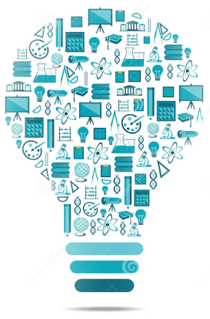A Deep Dive into Agile and Scrum Methodologies
In today's fast-paced world of software development, where requirements change rapidly and customer expectations are constantly evolving, traditional project management approaches often fall short. This is where Agile and Scrum methodologies come to the rescue, offering a flexible and iterative framework that empowers development teams to adapt, collaborate, and deliver high-quality software in a more efficient and customer-centric manner.
Agile scrum methodology is a project management system that relies on incremental development. Each iteration consists of two- to four-week sprints, where the goal of each sprint is to build the most important features first and come out with a Potentially Shippable Product.
Check out our Certification courses to get professionally equipped.
People often ask, “Is Scrum an acronym for something?” and the answer is no. It is actually inspired by a scrum in the sport of rugby.
Understanding Agile Methodology: Embracing Change for Success
Agile is a mindset and a set of principles that guide the way software development projects are planned, executed, and delivered. Unlike traditional Waterfall approaches, where each phase is completed sequentially, Agile encourages adaptability, customer collaboration, and incremental development. Some key principles of Agile include:
-
Individuals and interactions over processes and tools: Agile emphasizes the importance of effective communication and collaboration among team members and stakeholders.
-
Working software over comprehensive documentation: While documentation is valuable, the primary focus is on delivering working software that meets customer needs.
Check out our Certification courses to get professionally equipped. -
Customer collaboration over contract negotiation: Agile teams work closely with customers to understand and incorporate their feedback throughout the development process.
-
Responding to change over following a plan: Agile welcomes changes in requirements and adapts to them, providing a more responsive approach to development.
For Free Demo classes Click Here!
Why Scrum is used?
In short, scrum is a framework for effective collaborations among teams working on complex products. Scrum is a type of agile technology that consists of meetings, roles, and tools to help teams working on complex projects collaborate and better structure and manage their workload.
Scrum Methodology: A Framework Within Agile
Scrum is one of the most popular Agile methodologies, providing a structured framework for teams to implement Agile principles effectively. It consists of predefined roles, ceremonies, and artifacts that facilitate collaboration, transparency, and continuous improvement.
Roles in Scrum:
-
Product Owner: Represents the stakeholders and defines the product backlog, ensuring that the team is building the right features.
-
Scrum Master: Facilitates the Scrum process, removes obstacles, and ensures that the team adheres to Scrum practices.
Check out our Certification courses to get professionally equipped. -
Development Team: Cross-functional members responsible for turning product backlog items into potentially shippable increments of work.
Ceremonies in Scrum:
-
Sprint Planning: The team plans the work to be done in the upcoming sprint and selects items from the product backlog.
-
Daily Scrum (Standup): A brief daily meeting where team members share their progress, plans, and challenges.
-
Sprint Review: At the end of each sprint, the team demonstrates the completed work to stakeholders and gathers feedback.
-
Sprint Retrospective: The team reflects on the sprint and identifies areas for improvement in their processes.
Artifacts in Scrum:
-
Product Backlog: A prioritized list of user stories and features that need to be developed over time.
-
Sprint Backlog: The set of items from the product backlog that the team commits to completing during the sprint.
-
Increment: The sum of all the completed backlog items at the end of a sprint, representing a potentially shippable product.
For Free Demo classes Click Here!
Benefits of Agile and Scrum:
-
Flexibility and Adaptability: Agile methods allow for changing requirements, making it easier to address evolving customer needs.
-
Faster Time-to-Market: Iterative development and continuous feedback enable quicker delivery of valuable features.
-
Customer Collaboration: Regular interactions with customers ensure that the product aligns with their expectations.
Check out our Certification courses to get professionally equipped. -
Improved Quality: Frequent testing and integration lead to higher software quality.
-
Enhanced Team Morale: Collaborative work and a focus on self-organization contribute to motivated and engaged teams.
For Free Demo classes Click Here!
Mentor - Vyankatesh Panchal
Intormation and research are sources from internet.
Tags: #Scrum methodologyBLOG #Networking COURSES IN PUNE #nitsglobal #website #blog

